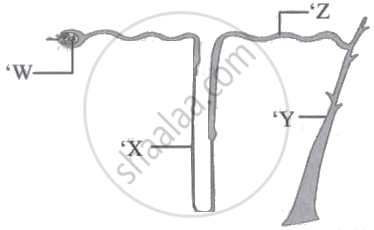Advertisements
Advertisements
प्रश्न
Prove that mammalian urine contains urea.
उत्तर
- Urea is a nitrogenous waste formed by breakdown of protein (deamination of amino acids).
- During this process, amino groups are removed from the amino acids present in the proteins and converted to highly toxic ammonia. The ammonia is finally converted to area through ornithine cycle. Thus, the urea formed is passed to kidneys and excreted out of the body through urine.
- Reabsorption of urea (proximal tubule, collecting ducts) and active secretion of urea (Henle loop) leads to a urea circulation (urea recycling) between the lumen of the nephron and renal medulla, which is an important element of the renal urine concentration.
- About 54 g of urea is filtered per day in the glomerular capsule, of which approximately 30 g is excreted in the urine and 24 g is reabsorbed into blood (assuming GFR is 180 litres/day).
- Urinalysis can help detect the amount of urea in urine (Urine urea nitrogen test, urease test, etc.).
APPEARS IN
संबंधित प्रश्न
Osmoreceptors involved in renal control mechanism are found in ____________ part of the brain.
Excess salt intake will lead to ______.
The amount of urine that is excreted everyday by a normal adult is ______.
The rate of filtration of plasma through the glomerulus per minute is ______.
The ascending limb of the loop of Henle's is lined by ______.
Decrease in the blood supply to the afferent arteriole stimulates the secretion of ____________.
When water retention is necessary, ADH makes the cells of ______ permeable to water.
Reabsorption of water does NOT occur in part labelled as

Juxtaglomerular cells secrete ...A... when there is a fall in ...B... ion concentration.
Choose the correct option labelled as A and B.
Renin and angiotensin are secreted by ______ and ______ respectively.
